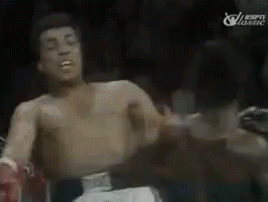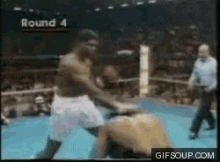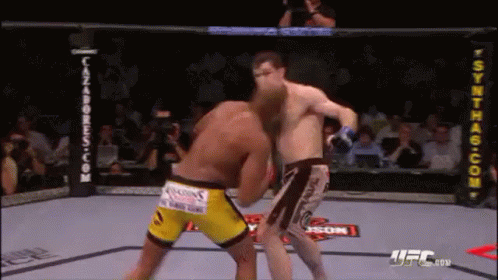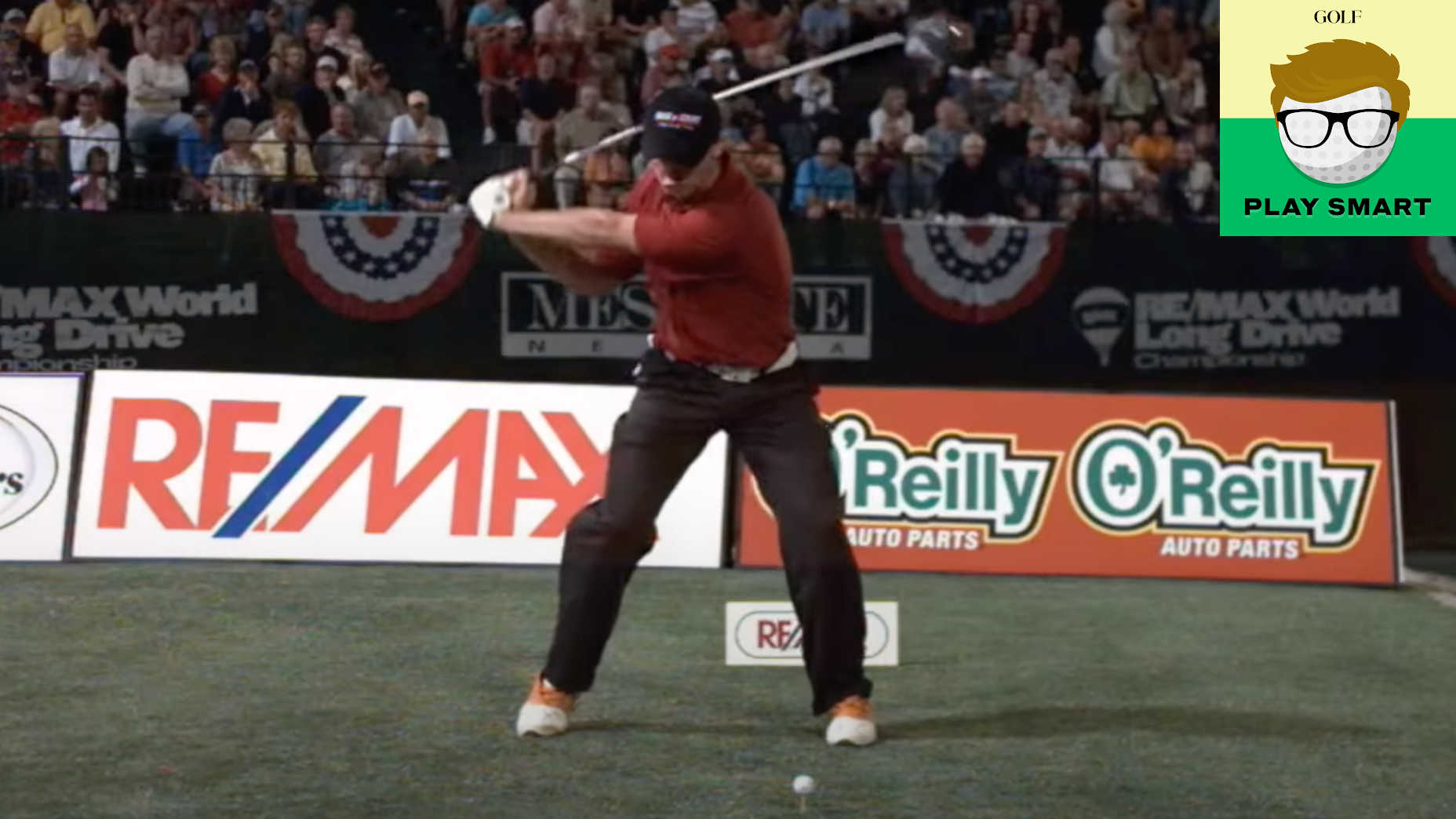1. Learn (including getting critiqued) + do the drill. You may have mechanical or posture issues blocking the ideal action.
2. IMO It is good to first learn the lateral part of the shift he shows at the beginning without worrying about the swing.
3. You then need to add the correct counterrotation through the upper body that creates the
Figure 8 action moving in both directions.
4. As an analogy, "Riding the Bull" is about how your body would move to stay on the ground and not fall while moving with fast shifts - like if a bull were trying to buck you. To me (martial arts & some boxing background) dynamically it feels similar to a boxing "bob and weave". It's a very athletic, fluid motion. The posture puts you in a position to absorb or dole out quicker, high-power movement. Riding the bull isn't exactly the same as any one boxing move, but the feel for the motion in a Figure 8 was noticeable to me.
Watch Ali. You can bob and weave standing tall. How's he moving like this? Hint: it's not pictured in this gif, and it's not about his hands on the ropes. Hint 2: Notice the taunting hip jiggle at the end.
You can also bob and weave low:
And you can bob high to low and back again:
It doesn't feel effortful to do this once you learn it. But the muscles & coordination these guys use to do this so well just happen to be the ones that get weak with deskbound life.
Relevant learning notes:
-I said three things that aren't about feel first because there are just too many things that "feel right" that are wrong. Sometimes the wrong move feels right because it's less effortful than what you did before, but is still not mechanically ideal. Usually the best move feels even more effortless than what you were doing before because it helps your body move more easily. This notion pretty much sums up a lot of form development overall.
-Ride the Bull is a pretty good example of an "effortless yet athletic" drill move IMO. The shift feels effortless. But SW warned me that it might make me sore overdoing it. Even when I was doing it wrong (moving and landing out of posture & loading up my quads too much) it was tiring out the glutes/hamstrings/support muscles. Once I started to get deeper and more fluid it made it very clear that I still had physical weakness in those areas that were contributing to my posture issues in my drills and throws. The good news is that as a standalone drill it's also a great exercise! But remember to take breaks as necessary.
-Remember that if the drill move is a big change, the permanent change in your real throw usually lags it by at least a few days
after you fully mastered the move (often 2-3 weeks). I think it's normal that the move might tend to come and go in your real throws in the meantime. Since I record so much, I find it interesting to watch this process happen over and over again when I learn new moves.
-In the drill video (Turbo Encabulator) - and most of his videos - I think SW/seabas has very tight control over the movements. It was really hard for me to connect various parts of the motion together & the drill revealed several problems at once. I usually find that exaggerating the move, getting it critiqued/fixed, and then learning to shrink it down from the exaggeration is most effective. The RtB move was such a big difference for me that I even exaggerated certain things again away from the preferred move to check if I was actually on track before, and SW was able to point out what specifically was wrong again, which helped me understand what I should aim for in the drill.
-I also did Ride the Bull while making dinner and holding my daughter (25 lbs). Doing it with a bit of weight helped reinforce which motion pattern is effective and sturdy. Fun for the whole family! Don't worry, I did not sling her at the end.





